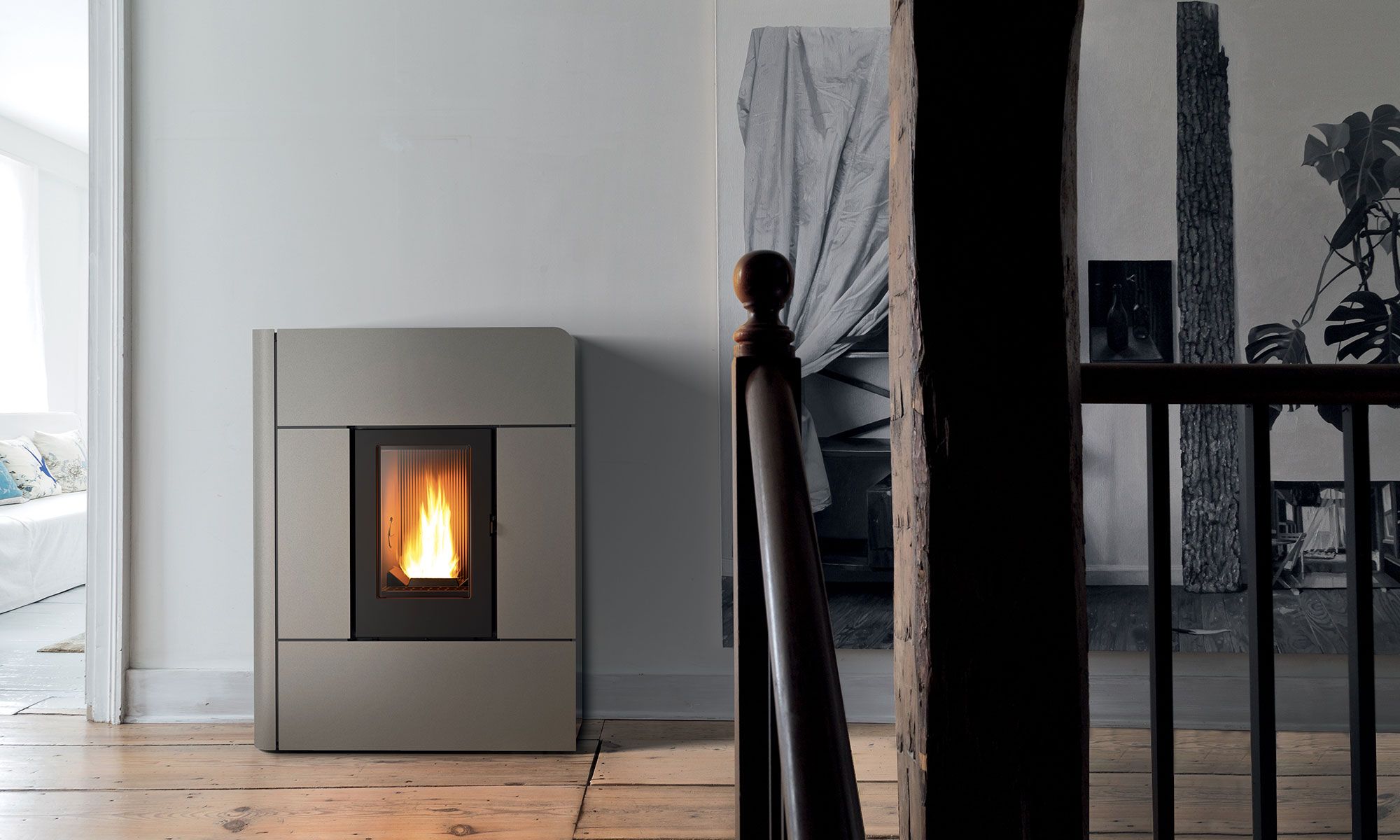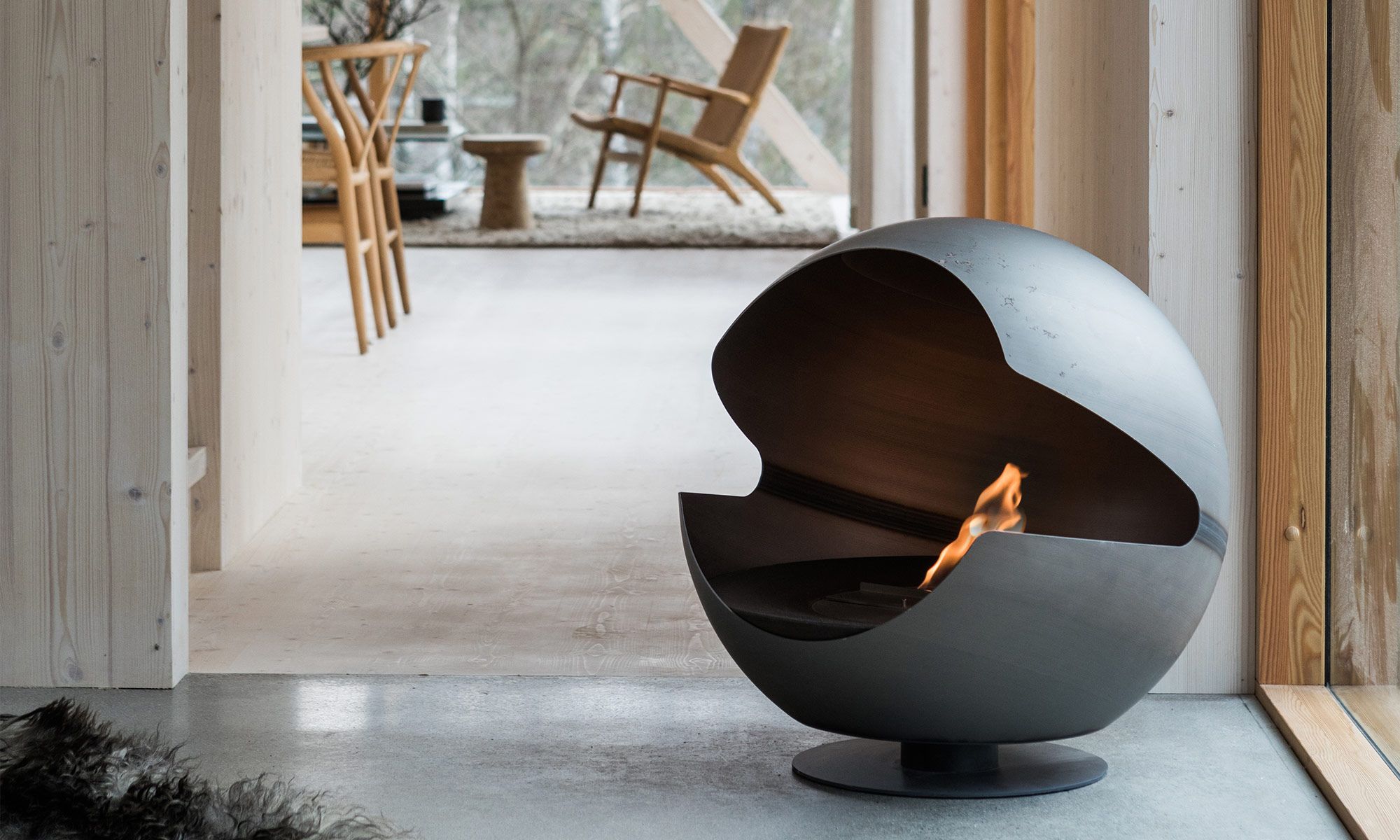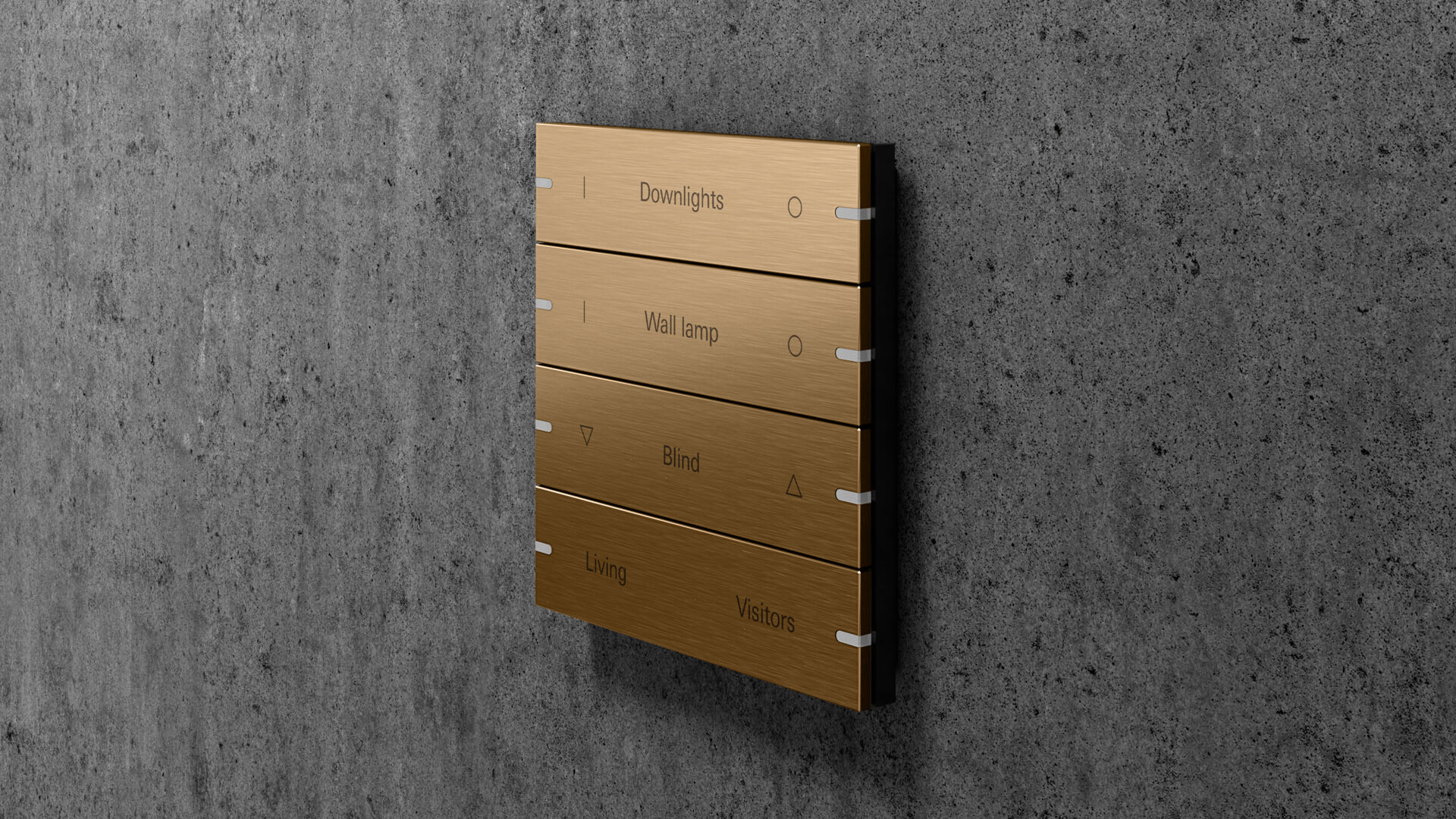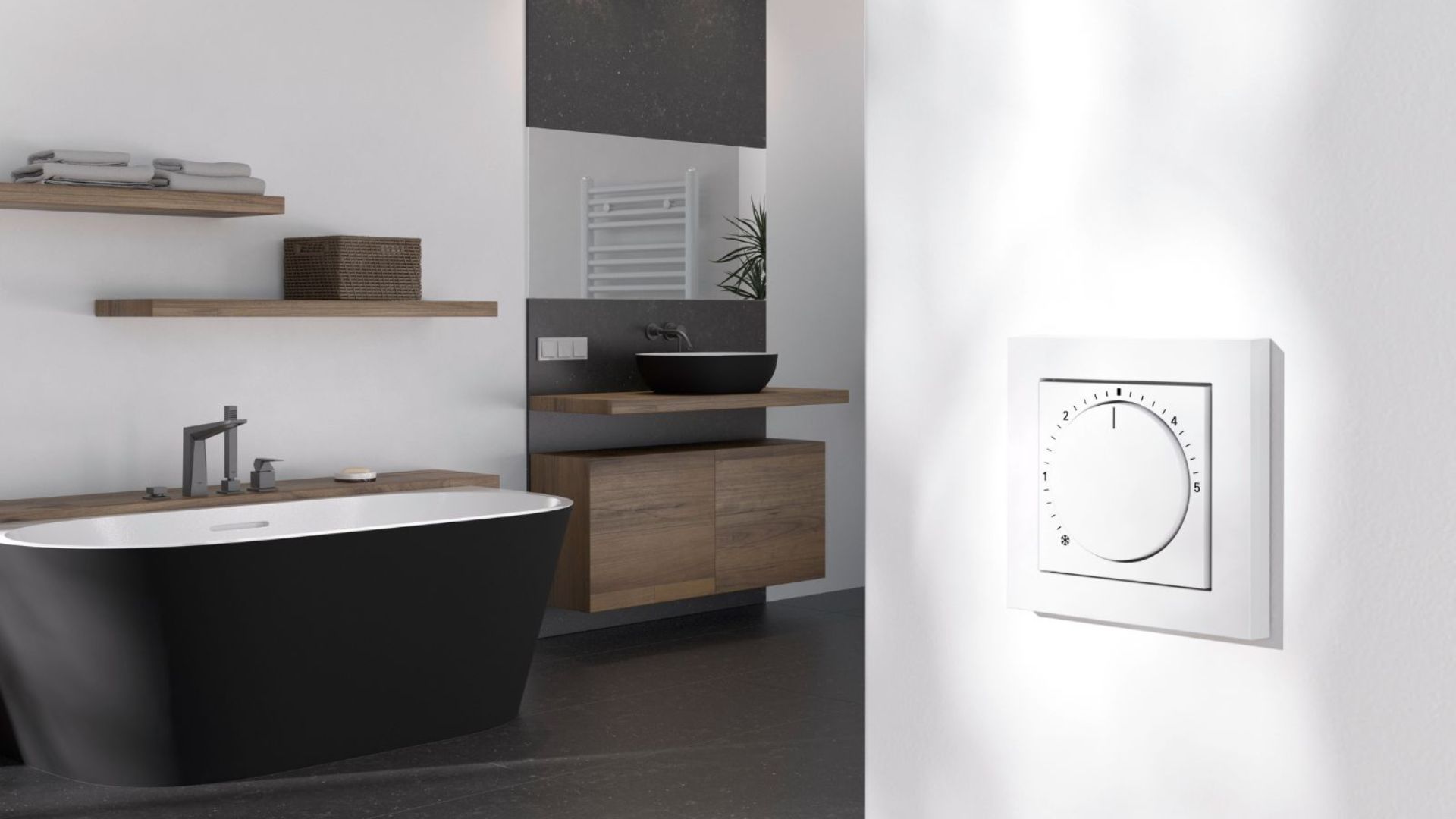
What better way to spend long winter nights than snuggled up in front of a crackling fire? If you want to bring that kind of cosiness into your own living room, thorough planning is key. We’ve compiled a comprehensive checklist of everything you should consider before installing a fireplace.
Indoor fireplaces not only keep your house warm – they also set the perfect mood for bad weather days. Modern designs can even serve as a visual highlight to upgrade your interior. Manufacturers offer a variety of models, from classic wood-burning stoves to bioethanol-fuelled alternatives. But what’s the difference and which option is the right one for you? This article guides you through every step of planning a fireplace installation.
1. How does a fireplace work?
Regardless of which type of fuel is used, stoves transmit warmth just like conventional heaters via radiation and convection. The resulting temperature mainly depends on the material and construction method used. Basic frameworks usually consist of cast iron or sheet steel. A coating of natural stone or tiles ensures a particularly efficient and long-lasting heat emission. The combustion chamber of a fireplace installation is lined with either fireclay brick or vermiculite. Via openings on the side or on top, the heat generated inside spreads throughout the entire room.
2. What’s the best way of adding a fireplace to a house?
Before you purchase anything, you should always consult with your chimney sweeper. They can check whether your chimney meets the necessary requirements and advise you on mandatory safety precautions. The chimney sweeper will also conduct a final inspection once your fireplace installation has been completed. Based on their recommendations, you should ask yourself first and foremost: when and how do I want to use the stove?
Before you purchase anything, you should always consult with your chimney sweeper. They can check whether your chimney meets the necessary requirements and advise you on mandatory safety precautions. The chimney sweeper will also conduct a final inspection once your fireplace installation has been completed. Based on their recommendations, you should ask yourself first and foremost: when and how do I want to use the stove?
If you’d like to create a homely atmosphere on occasion, you can opt for a model made from cast iron or sheet steel without extra coating. In that case, the heat is directly emitted into the indoor air. Fireplaces with a coating made from natural stone or soapstone, on the other hand, can store heat and thereby keep the room warm for hours after they have stopped burning.
If you’re looking for something to help you save energy on a regular basis, we recommend a water-bearing stove installation. This type is connected to the water circuit of your central heating system and therefore spreads the generated warmth evenly throughout every room. You can even use it for your hot water supply.
3. Electric, gas, wood: fireplace installations for different living spaces
Another important question during the planning process: where (i.e. in which room and which kind of building) do you want to retrofit a fireplace? Wood-burning models extract oxygen from the surrounding air – but in energy-efficient houses with modern ventilation systems, there’s often not enough surplus oxygen available. You will then need a stove that has its own external air supply.
Another important question during the planning process: where (i.e. in which room and which kind of building) do you want to retrofit a fireplace? Wood-burning models extract oxygen from the surrounding air – but in energy-efficient houses with modern ventilation systems, there’s often not enough surplus oxygen available. You will then need a stove that has its own external air supply. The size of your home also plays a role: corner fireplace installations prove particularly suitable for smaller rooms. Round stoves look great when placed against the middle of a large wall. In huge open living spaces, free-standing models make for an eye-catching centre piece. With a rotatable variant, you can even watch the flames from multiple angles. You’re living in a home that doesn’t allow you to burn actual wood indoors? No problem: there are plenty of bioethanol- or gas-fuelled fireplace installations to choose from as well. They are not attached to the chimney and can be placed virtually anywhere you see fit.

4. Which capacity should your fireplace have?
Overheating is not only a waste of energy – it can also turn a cosy lounge area into a sweaty sauna. That’s why you should choose a stove whose output matches the size of your room. Most conventional fireplace installations have a heating capacity of around five and nine kilowatts – but oftentimes, you won’t even need as much. The degree of efficiency (i.e. the relation between fuel and output) should amount to at least 73 percent. Furthermore, we recommend a combustion chamber with a vermiculite insulation. Vermiculite is a natural mineral that facilitates the burning process better than traditional fireclay coatings.
5. Safety regulations for fireplace installations
Of course, you want to make sure that your stove does not put your home at risk in any way. Depending on where and in which type of building you live, there are specific standards you have to meet in terms of thermal protection. This includes insulation against adjacent walls: with fireproof walls made from concrete or brickwork, you’ll definitely be on the safe side. Walls that contain flammable materials such as wood or paper will require an additional layer of primary walling – based on plaster, natural stone, or fine stoneware.
Of course, you want to make sure that your stove does not put your home at risk in any way. Depending on where and in which type of building you live, there are specific standards you have to meet in terms of thermal protection. This includes insulation against adjacent walls: with fireproof walls made from concrete or brickwork, you’ll definitely be on the safe side. Walls that contain flammable materials such as wood or paper will require an additional layer of primary walling – based on plaster, natural stone, or fine stoneware.
The area surrounding your fireplace installation must be properly protected as well. For wooden, laminate, linoleum, cork, or carpet floorings, you can use spark-proof plates made from sheet steel and glass. Non-combustible floors, i.e. concrete or tiles, do not have to be covered.
Another security precaution you shouldn’t skip: smoke alarm devices. They are already mandatory for residential buildings in many European countries – including Norway, Denmark, Sweden, Finland, The United Kingdom, Austria, Belgium, Germany, and the Netherlands. But even if you’re not obliged by law to setup smoke detectors in your home, it’s a smart idea to do so anyways. The danger not only lies in outbreaks of actual fire, but also in the fumes developing beforehand. Did you know that three gasps of breath can already lead to smoke poisoning? This can become especially dangerous at times when you’re asleep. Gira smoke alarm devices protect you from these kinds of hazards with the help of smart sensors: the Dual Q version, for example, reacts to the formation of smoke particles as well as sudden changes of temperature in the room. It will then sound the alarm in due time, before any damage is done.
6. Installing a fireplace at the right distance
How far or close a stove should be positioned in relation to other surfaces depends on the respective model. On the backside, you’ll usually find a label with information about the prescribed safety margins for flammable components. With regard to non-flammable components, you should keep a minimum distance of ten centimetres so that the hot air can circulate freely. Furniture, doors, or electrical devices must be removed by 80 centimetres at the very least. If you have any glass surfaces in the vicinity, you should aim for an even larger distance.
7. Quality first: how to find a fireplace that checks all the boxes
Of course, the costs for your installation can vary considerably – depending on the manufacturer, design, and specific features. Our tip: invest your money in a high-quality product from a well-established company. If you live in a European country, the model of your choice should carry the CE label (short for ”Conformité Européenne”) and have been approved in accordance with the norm DIN EN 13240. This means that it meets all safety, health, and environmental standards for single-room heating based on solid fuels.

8. From minimalist to extravagant: fireplace installations for any style
A visually pleasing form can be just as important as convenient functions – especially for those who love a perfectly coordinated interior. In a cottage-style house close to nature, a rustic design with ceramic or soapstone will blend in neatly. For modern, urban-inspired homes, minimalist stoves made from sheet steel are a great fit. You can even choose a specific stove pipe – the element that connects a wood-burning fireplace installation to the chimney, also known as flue tube – to match the surrounding colours and materials. Variants with marked welding seams, for example, complement the authentic charm of industrial-style interior.



